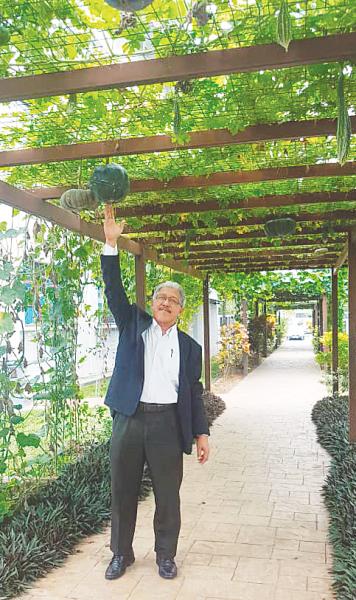PETALING JAYA: Malaysia produces only 48% of the vegetables it consumes, making the country over-reliant on imports. This is due to several factors, including the lack of available land for farming.
There are now calls for more productive use of land, including in the cities.
A group of researchers from Universiti Putra Malaysia (UPM) has collaborated with Kuala Lumpur City Council (DBKL) to promote urban farming in housing areas.
“For instance, we have worked with the community in Cheras,” UPM Faculty of Agriculture dean Prof Dr Abdul Shukor Juraimi said.
“It has been going on for a few years now, we have empowered them to do it themselves.”
Abdul Shukor also commended the adoption of urban agriculture by Serdang assemblyman Dr Mariah Mahmud in her constituency.
“With the help of agencies like DBKL and Dr Mariah, leaders need to start giving initiatives to their communities to do urban farming,” the academic said.
He said it is a collective effort by researchers and public agencies whereby the former offer their expertise while the latter provide funding for urban farming projects.
“It will be good if we can increase our (self-sufficiency level for) vegetables to 60% as it can reduce our import food bill, currently we have a negative balance of trade (for vegetables),” he said.
To do this, city dwellers are looking for ways to grow food with the limited space they have.
Over the years, there has been an increasing interest in indoor farming.
“The base technology of indoor farming is called hydroponics, which only requires water and some growing medium that is non-soil based,” according to CityFarm Malaysia director Johanson Chew.
His organisation educates the public on growing plants in the city, which can be challenging due to the environmental factors at play, especially lack of sunlight.
“For those who don’t have a balcony for sunlight, they need to purchase LED glow light as a replacement.
“It provides all the spectrums required for plants to grow,” Chew said.
Indoor farming costs more mainly due to LED glow lights, with prices starting from RM700 for an area sized 2ft by 5ft.
For beginners, he recommends growing a variety of local produce, including bok choy, leaf mustard and bayam.
“Indoor farming is still at a very beginning stage in Malaysia, where things are going to be costly and the market awareness are not there, so it can be challenging if you have no experience venturing into this type of business,” Chew said.
“Indoor farming costs more than conventional farming because of the equipment needed to operate indoors.”
It takes about 24 months to see returns on investment.
Despite the slow growth rate, the CityFarm Malaysia director is confident about the prospects for indoor farming.
“As more and more people are moving to the cities, urban farming will likely be the trend as it supplements our existing food source and boosts food security,” he added.













